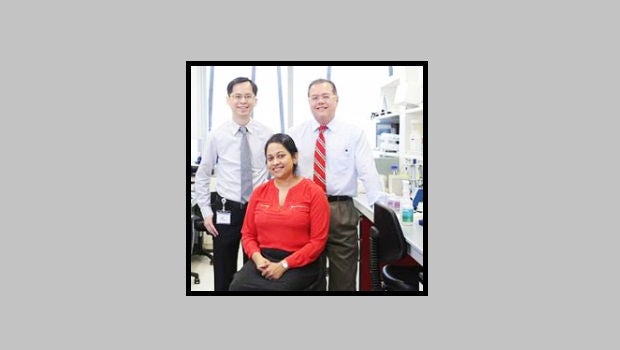
Q: Glaucoma is a condition characterised by progressive damage to the optic nerve. In Singapore, it is the leading cause of irreversible blindness, affecting about 3 per cent of those aged over 50. But what causes it?
Associate Professor Eranga Vithana: The hereditary component is a big part of why a patient develops glaucoma, but along with genetic risks, other factors such as age, gender and degree of myopia could play a role too. The most widely known risk factor linked to optic nerve damage is intraocular pressure (eye pressure). This is due to the reduced drainage of a fluid called aqueous humour out of the eye. The fluid provides nutrients that keep structures in the front of the eye like the lens, iris and cornea healthy. Currently, intraocular pressure (IOP) is the only risk factor that is treatable. IOP is usually reduced using eyedrops, laser treatment or surgery.
Q: Is it possible to predict a patient's likelihood of getting glaucoma?
Eranga: It depends on the type of glaucoma. For early onset glaucoma, which affects people before they turn 40, we found that most cases are caused by a gene called Myocilin. If there have been cases of juvenile onset glaucoma in a family, the rest of the members should undergo screening for this gene even before symptoms such as disappearing side vision appear. But it is very difficult to predict late onset glaucoma. That is why we are trying to find genes linked to it. When there are enough known genes linked to the disease, we can one day do some sort of risk profiling for patients. But this is a long way ahead.
Q: Last month, two studies done by scientists at the Singapore Eye Research Institute (Seri), the Singapore National Eye Centre, the Genome Institute of Singapore and the National University of Singapore were published together in the prestigious science journal Nature Genetics. What can you tell us about the studies?
Professor Aung Tin: One study discovered two new genes linked to primary open-angle glaucoma risk among the Chinese. T his type of glaucoma makes up between 70 and 80 per cent of all glaucoma cases worldwide, and is due to poor aqueous outflow. The other study done among Asian, European, American and Australian populations identified four genes that could affect intraocular pressure and risk for glaucoma. This discovery could help us understand glaucoma better. In the future, it could also help in the screening and early diagnosis of the disease, or in the assessment of the risk profile of patients. Now that we have identified these genes, the next step is to find out what they do and their role in the glaucoma pathway, and if there are any potential targets for therapy.
Eranga: Once we find out the catalogue of risk genes associated with the disease, we can study how these genes work and the mechanisms by which they cause disease. Ultimately, we are working towards more specialised, personalised therapy. By knowing the genetic markers important to the disease we hope to develop treatment tailored to patients' genetic makeup.
Q: What surprised you about the studies?
Aung Tin: The interesting thing is that the same gene, ABCA1, came out in both studies. Researchers used two different approaches, and found the same gene. Eranga: This means that the ABCA1 gene is responsible for two aspects - it controls IOP and is also able to act as a risk factor for primary open-angle glaucoma. So we speculate that patients with these variations in this gene could be developing glaucoma through increased IOP.
Associate Professor Cheng Ching-Yu: In the study on IOP, blood type was also found to be related to IOP - this is a new factor that emerged only from this study. It appears that people with B blood types are more prone to developing higher IOP. But exactly how blood type contributes to the disease remains unknown.
Q: In September, Seri completed its move into the new Academia building on the Singapore General Hospital campus. Why move?
Aung Tin: The move is a consolidation of our four sites that were previously in places such as the National University of Singapore and Jalan Bukit Merah. In the past, it was difficult to operate when we had four different sites. Holding meetings and communicating with colleagues was not efficient. We also wanted to be located next to the hospital, to have better access to patients, and so we could communicate with our doctors who interact directly with patients. In the next few years, we hope to build up three new research programmes in myopia, health services research, and medtech or devices, and in the long term, to develop more translational research and industry collaborations.













 Get it on Google Play
Get it on Google Play